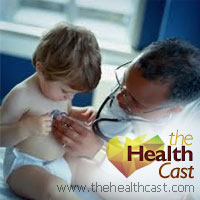
Here are some of the latest health and medical news developments, compiled by the editors of HealthDay:
Artificial Hips a Bigger Problem Than Breast Implants: Study
Hundreds of thousands of people who received artificial metal-on-metal hips made by Johnson & Johnson, among others, may face serious health threats, including long-term disability, British health experts report.
The BMJ and BBC researchers said more people are at risk from the metal artificial hips than are affected by faulty breast implants made in France, the subject of another recent European medical device scare.
Their investigation found that toxic cobalt and chromium ions in the artificial hips can penetrate tissue and enter the bloodstream, spreading to major organs and killing bone and muscle, according to Bloomberg News.
Dr. Carl Heneghan, director of the University of Oxford’s Centre for Evidence-Based Medicine, said in a BMJ statement that a uniform, international system to assess and monitor implantable medical devices would help safeguard patients around the globe.
“Creating an independent system for post-marketing analysis for implantable medical devices that is robust and increasing international coordination around device alerts and withdrawals should go some way to sorting out the current mess,” Heneghan said, according to Bloomberg.
In December, reports that breast implants made by Poly Implants Protheses SA were leaking industrial silicone led French and German officials to recommend that thousands of women have the implants removed.
The hips the researchers studied included those made by New Jersey-based J&J; Zimmer Holdings of Indiana, and a London company, Smith & Nephew Plc (SN).
Because medical devices don’t need the same type of clinical testing in Europe required of new drugs, the hips were implanted in patients without adequate safety studies, the researchers said. Potentially risky design changes made over the past 10 years weren’t flagged by regulators and brought to the attention of doctors and patients.
Heneghan said procedures for medical device approval in Europe are less stringent than in the United States. In the United States, tests of medical devices are government-run under the Food and Drug Administration, and manufacturers must provide proof of safety and effectiveness. In the EU, however, manufacturers need only prove the devices are safe, and they can choose from about 70 private firms, called “notified bodies,” to test their products, the Bloomberg report stated. Approval from one firms enables the manufacturer to market the device throughout the 27 EU nations.
Study co-author Nick Freemantle, professor of clinical epidemiology and biostatistics at University College London, said the current approval standards are dated. “The methods of device regulation seem to be more from the 1950s than the 21st century,” he wrote in the study, Bloomberg reported.
—–
Americans Rushing to the ER for Toothaches
For toothaches and other routine dental care, more Americans are showing up at hospital emergency rooms, driving up health-care costs in the process, a new report of U.S. dental trends finds.
Between 2006 and 2009, visits to ERs for dental problems jumped 16 percent nationwide, even though ERs lack the staff to handle many dental services, according to the Pew Center on the States report, released Tuesday.
The recent recession, which led many people to drop preventive dental care, and a shortage of dentists in rural areas may have contributed to the trend, experts said, according to the Associated Press. Also, low Medicaid fees paid to dentists may make it more difficult for poor families to get regular dental care, they said.
According to the study, 56 percent of children enrolled in Medicaid never saw a dentist in 2009, the AP reported.
“Emergency rooms are really the canary in the coal mine. If people are showing up in the ER for dental care, then we’ve got big holes in the delivery of care,” Shelly Gehshan, who directs Pew’s children’s dental campaign, told the AP. “It’s just like pouring money down a hole. It’s the wrong service, in the wrong setting, at the wrong time.”
And, after obtaining emergency dental treatment, many patients make return visits to the ER instead of seeking less expensive follow-up care in a dentist’s office, said the researchers, who reviewed ER data from 24 states, information from the Agency for Healthcare Research and Quality, and other dental-care research.
—–
Condom-Use Errors Common, Study Finds
An analysis of data from 50 studies across 14 countries finds that errors in using condoms are common and could contribute to unwanted pregnancies or sexually transmitted infections.
Stephanie Sanders and colleagues at The Kinsey Institute for Research in Sex, Gender, and Reproduction at Indiana University looked at 16 years of data on the issue, mainly from the United States and Britain.
They found that:
- Between 17 and 51 percent of people put condoms on partway during intercourse (dangerous because fluids can be exchanged prior to ejaculation). Between 13 percent and 45 percent of respondents said they took a condom off before intercourse had finished.
- Between one-quarter and one-half of respondents said they failed to leave enough room at the tip of the condom for semen to collect.
- 75 percent of men and 82 percent of women failed to check condoms for damage prior to use.
- Condom breakages occurred for between about 1 percent and 41 percent of respondents, depending on the study, and between about 13 and 19 percent said they had experienced condom slippage.
- Between 4 percent and just over 30 percent of participants said they had put a condom on inside-out, then flipped it the other way around, potentially upping the risk for transmission of bodily fluids.
- Between 2 percent and 11 percent of people opened condom packets with a sharp object or somehow exposed the condom to rips/tears. Between 1 percent and 3 percent of respondents said they had re-used a condom during a sexual encounter.
The findings were reported in the journal Sexual Health.

